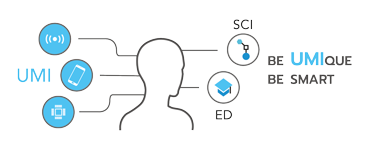 |
||
|
Short CV [Gr/En] | Publications | Teaching | Projects | Books Dr. Spyridon Papadakia | Projects |
|
|
|
Project name and Period |
Program, Funding |
Project objective |
STE(A)MonEDU 2020-2022     | Erasmus+KA3 | The STEAMonEdu project aims to increase the adoption and impact of STE(A)M education by investing in the community of stakeholders and the professional development of educators. Adoption and impact of ST€AM education by investing in the community of stakeholders and the professional development of educators. As a result of research and creative techniques that will be instrumental among the members of the community, the STE(A)M education framework will be produced, which will include competences, policies, methodologies, educational objects, etc. |
|
UMI-Sci-Ed. 2017-2019
|
Horizon 2020 |
UMI-Sci-Ed (Exploiting Ubiquitous Computing, Mobile
Computing and the Internet of Things to promote Science Education)
UMI-Sci-Ed aims at enhancing the attractiveness of science education
and careers for young people via the use of latest technologies. We
putted Ubiquitous and Mobile Computing and the Internet of Things (UMI)
into practice towards enhancing the level of STEM education. At the
same time, we are increasing the attractiveness of pursuing a career in
domains pervaded by UMI for these youths. |
|
2009-2011
|
European Lifelong Learning Program |
Revitalizing
Small Remote Schools for Lifelong Distance e-Learning. European
citizens living in remote rural or insular areas are often excluded
from mainstream educational activities easily accessible by people
living in larger cities. Fewer lifelong learning opportunities are
available to both young pupils and adults. |
|
2006-2009
|
SOCRATES PROGRAMME. COMENIUS 2.1 Action (Training of School Education Staff) European
Lifelong Learning Program |
TICTC: Teachers ICT Competences. The aim of the project is to equip teachers with ICT competences to improve and develop the teaching process that leads students with hearing difficulties to raise their motivation to learn, forms learning skills that are necessary for everybody to live in the information and knowledge based society.A way to effective learning for children with hearing difficultiesIt has envisaged the integration of ICT in the teaching and learning process thus making the learning process more effective.Main outputs comprise a course description, study materials for the course and advice book how to use ICT in the core subjects. The study materials are planned in the form of a CD version and printed material for the use in the form of Distance Education |
|
2006-2008
|
European Commission, Socrates Project |
The
main focus of Learning via Subtitling is the development of educational
material for active foreign language learning based on film subtitling.
It aims to cover the exigency for active learning where cultural
elements are involved effectively through real-life (simulated)
activities and the need for productive use of multimedia not as a nice
add-on but as the core of an activity. Learning
via Subtitling aimed to cover the need for i) creation of active
learning, task-based activities where cultural elements are involved in
an authentic and motivating way and which expose the learners to highly
contextualised language input, ii) productive use of multimedia
as the core of an activity and not as a nice add-on, iii) creation of
reusable activities requiring a relatively low level of computer
literacy by tutors developing such activities and iv)
soundness of the development methodology and transferability across
various languages and educational systems. |
|
OBELFA
|
European Lifelong Learning Program Grundtvig 1 |
Open
Blended eLearning for Adults. The main aim of OBELFA
was to create blended learning courses for adults,
related to specific topics for specific target
groups, with a balanced rate of face to face and online lessons, and to
revive interest on learning as a prerequisite for further education.
Depending on the technical conditions and knowledge of the
participants, there were used different eLearning
methods and different devices for easy access to learning
materials and support. The benefits of using Web2.0 technologies are
underlined. The methodology proposed by Obelfa project tries to fill a
gap between the theoretical and practical aspects of blended learning.
Developing an important number of courses for different target groups,
using new technologies, the OBELFA project is a real
pool for research, for experimentation of blended learning
techniques. The guide resulted will
be useful for those developing formal or non-formal courses for adults. |
|
1996-1998 |
FP4-TELEMATICS 2C European Union |
TRaining Educators through Networks and Distributed Systems. The
TRENDS project is aimed at enhancing the in-service training of
schoolteachers in secondary education in Europe. This training is
implemented through flexible distance learning methods, an in-service,
school-based training system, which utilises multimedia telematics
technologies. The TRENDS project has established a telematics network
based on existing technologies such as high-speed data networks (ISDN),
standard telephone leased lines (PSTN) and normal Internet TCP/IP
protocols. The underlying network is being developed from the ground up
in most cases, and in this way TRENDS is also acting as an Internet
service provider which is dedicated to teachers and learners. TRENDS
project aimed
at the in-service, distance training of 2,400 school teachers in
Secondary Education, on the "use of Information Technology and
Telematics in the learning process", from six of the participating
countries (400 from each country) - Greece, Italy, Spain, Portugal,
France and United Kingdom. More than 2500 teachers in 120 schools in 6
countries participated in the project.
https://cordis.europa.eu/project/id/ET1024 |
Greek Projects
|
Project name and Period |
Program, Funding |
Project objective |
| Ενίσχυση Σπουδών Πληροφορικής στο ΤΕΙ Λαμίας (20026-2008) | Ε.Π.Ε.Α.Ε.Κ. /ΥΠΕΠΘ. | Αξιοποίηση διεθνών τυποποιήσεων για την προσαρμογή ψηφιακού υλικού και επαναχρησιμοποίηση του. |
|
|
ΥΠΕΠΘ, Π.Ι., ΕΑ-ΙΤΥ | Επιμόρφωση και πιστοποίηση εκπαιδευτικών σε Βασικές Δεξιότητες ΤΠΕ |
|
ODYSSEA/S /Odysseia (1996-2000) |
Greek Ministry of Education (ΕΠΕΑΕΚ) |
integrated ICTE utilization in 400 high schools: infrastructure, network, software, teacher training |




